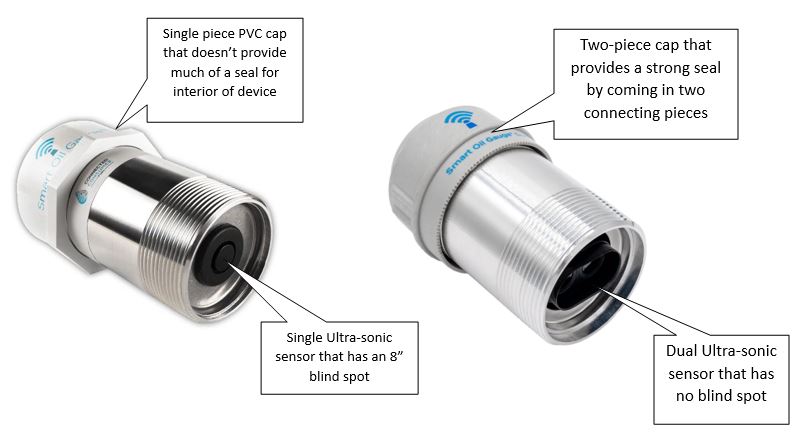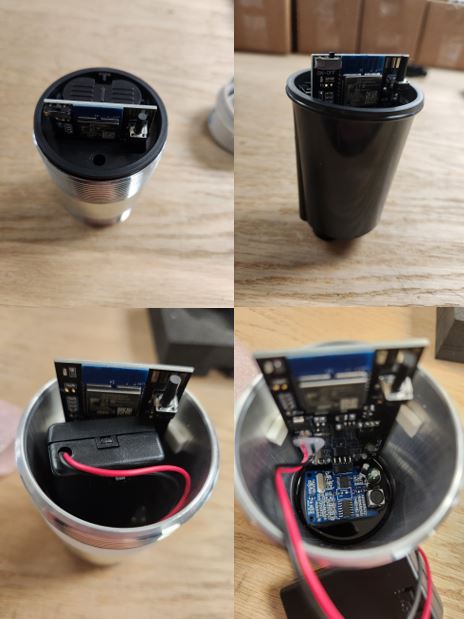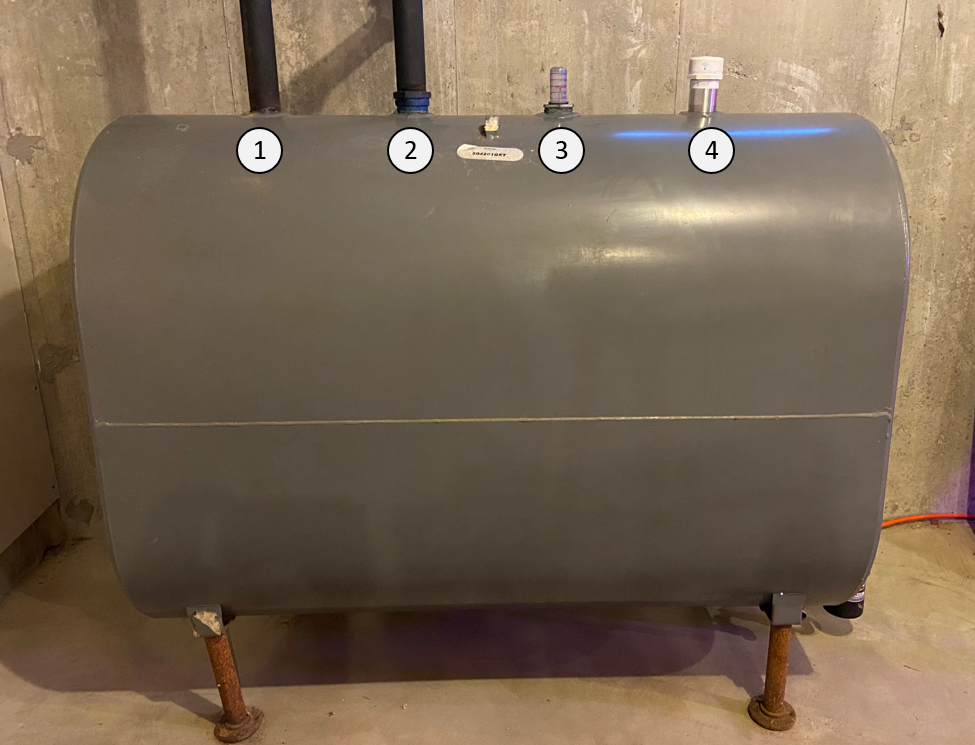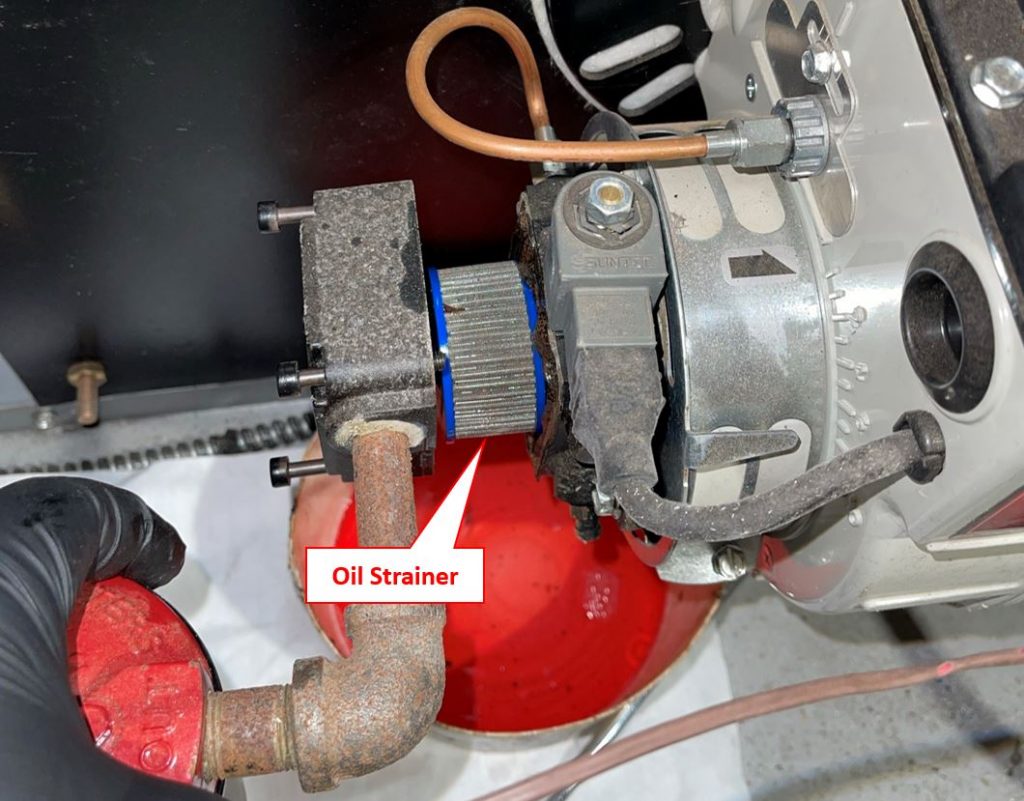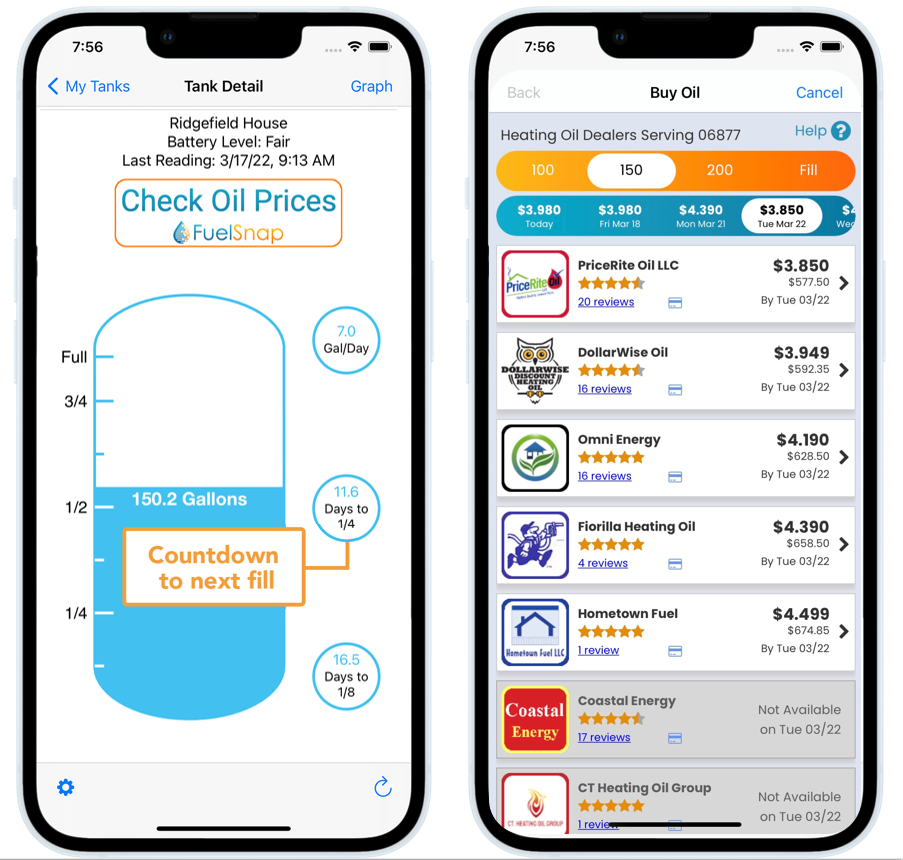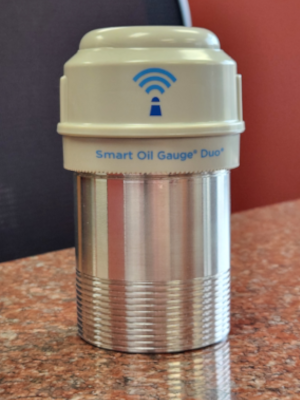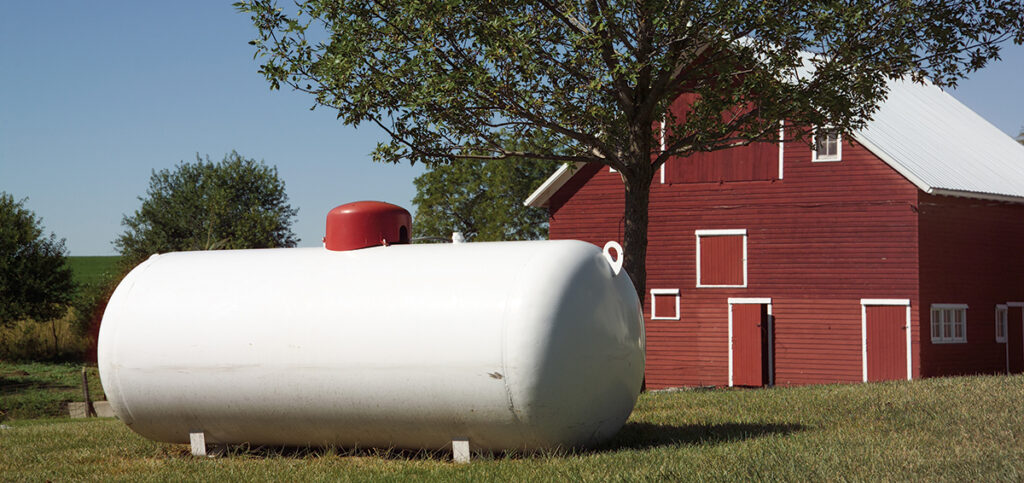It’s February! This means that it’s peak heating oil season! When you order your next delivery of oil, you might be wondering how much a full tank will last you during the winter months. A tank of heating oil will normally last you a couple of weeks. However, that is more of an average. In this post, we’ll cover this question a little bit more in-depth.
The Size of Your Heating Oil Tank
The biggest factor in how long your smart oil gauge will last is the tank’s size. The two most common forms of heating oil tanks are 275-gallon tanks. These tanks have a maximum capacity of 275 gallons. However, the tank will never be filled up to the max. The dealers will usually fill up the tank and leave about 5 or 6 inches of oil on the top. This is to prevent the risk of leaking and overflow. So the true capacity of the tank is around 250 gallons. The second most common size oil tank is a 330-gallon tank. The true capacity of these tanks tends to be around 300 gallons.
It’s also fairly common to have “dual tanks”. These are when you have two tanks (normally either 275 or 330-gallon tanks) connected. They are connected via their feed lines and a crossover pipe on the top and bottom of the tank. This will normally give the homeowner a larger tank capacity. With this increased tank capacity, you won’t have to order heating oil as often.
Homes that have underground tanks usually will have a capacity of 550 gallons. Sometimes even going up to 1000 or 2000 gallons! These tanks are less common because over time they can become an environmental hazard. Due to this, they are often being replaced with newer tanks.

The Size of Your Home Impacts Heating Oil Usage
After determining the size of your tank, you will need to know how much oil your home needs daily. Some of the factors that impact you much heating oil you’ll use daily include:
- The Size of Your Home. This is important to know because it will greatly affect how many gallons are being used daily. For example, a 1500 square foot home may use an average of 500 gallons per year, while a 3500 square foot home could use up to 1500 gallons per year!
- Your Home’s Energy Efficiency. A home that is 2500 square feet and well insulated may only use a minimum of 600 gallons per year! Meanwhile, a home of the same size that is poorly insulated, might use at least 1200 gallons per year.
- Your Heating System’s Age. A heating system that has been well maintained will usually last a lot longer than one that hasn’t been properly maintained. Some of these well-maintained systems can last upwards of 30 years or more! While this is great, technology tends to make these types of systems more efficient over time. They are usually upgraded into newly designed oil-fire furnaces to reduce the heating oil cost by up to 30% or more!
- Interior and Exterior Temperature. Turning down the thermostat a couple of degrees is a good way to decrease your heating oil usage. But an even bigger factor is the exterior temperature. On a day when it’s 10 degrees out, the average home may end up using an average of 8-12 gallons of heating oil just to keep the home warm. On a day where it’s only 30 degrees out, you’ll likely only burn around 5-7 gallons of heating oil on that day.
Daily Heating Oil Usage
Once you have the size of your home, you can use the below table to figure out how much heating oil you’ll use per day on average. This will provide you with a rough estimate of how long a full tank of heating oil will last.
But keep in mind, that you don’t want to ever let your tank go empty! Always make sure to order at a quarter to ensure that you don’t run out of heating oil.

How Long Will a Tank of Heating Oil Last?
The final factor that you should keep in mind to figure out how long your tank of heating oil will last is: the time you place your order. Similar to a car, it’s important to be aware that you should never let your tank run empty. This will not only shut down your burner, but it can also cause sludge to become sucked into the feed lines, which will ultimately clog up your system.
Due to this, it’s highly recommended that you order heating oil when you only have 1/4 left in your tank. We often say “reorder at a quarter” because you must do so.

The approximate reading on the 1/4 gallon mark on the tank gauge is 68 gallons. Because a 275-gallon tank will only hold 250 gallons when it’s full, that usually means that you have 182 gallons of usable heating oil before it’s time for you to order oil. Using the graph above, you can calculate your average usage of heating oil based on the recent temperatures outside. Example:
- The Size of Your Home: 2500 Square feet
- The Average Outside Temperature Since Last Fall: 30 Degrees Fahrenheit
- Average Daily Gallons at 30 Degrees Fahrenheit: 5.2 gallons per day
- The Size of Your Tank: 275 Gallons (Will hold 250)
- The Point to Reorder: 1/4 tank or 68 gallons
- Usable Gallon In-between Fills: 182 Gallons (250-68 = 182 Gallons)
- Average Number of Days Between Fills: 182 gallons / 5.2 gallons/day =35 days
With the average exterior temperature being 30 degrees Fahrenheit, a standard 275-gallon oil tank that heats a standard 2500-square-foot home will usually last an average of 35 days in between fills.
When To Check if you Need Heating Oil and When to Order
When you wake up in the morning during the cold winter months, the last thing you want is a cold house. Most of the time when this happens, it means that you’ve run out of heating oil. If you run out of heating oil, follow our step-by-step guide on what to do in this scenario.
Usually when you have an old-fashioned float gauge in your tank, we recommend checking your level at least once every two weeks. Especially during the winter months. You can set a reminder on your phone every week or so to check your oil tank. Doing this will give you another line of defense to prevent you from running out.
Another great thing that you can do for your tank is install a Smart Oil Gauge. Doing this will let you check your oil level wherever you are from your smartphone. You can program text and email alerts for when your tank gets low and you won’t have to worry about running out of heating oil again!
But, if you’re new to heating oil and are curious about how much heating oil your home might use, refer to this table below for your expected use during the winter.

Check Oil Prices Near You and Order Online
Usually, when your heating oil tank is down to 1/4 full, it’s time that you order heating oil. You can check your local heating oil prices on our FuelSnap website. This will let you price compare against other local dealers so that you get the lowest price available to you!
You can choose exactly how many gallons you want so you can avoid getting a surprise amount. Finally, be sure to check your tank every week or so to ensure that you don’t run out of heating!
Happy Heating,
Hunter


